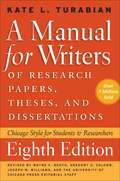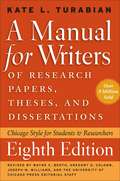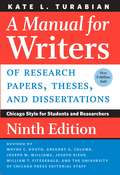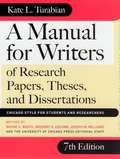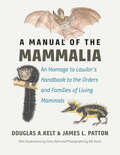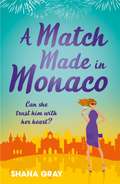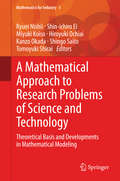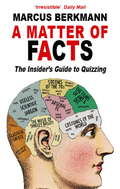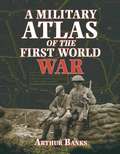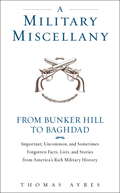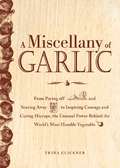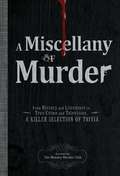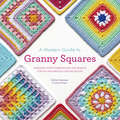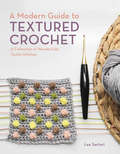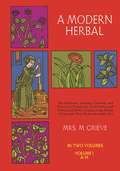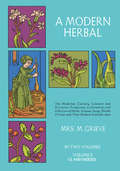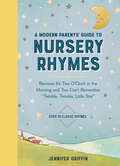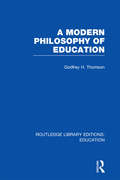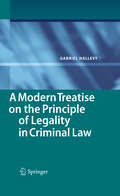- Table View
- List View
A Manual for Writers of Research Papers, Theses, and Dissertations 8th Edition
by Kate L. TurabianA little more than seventy-five years ago, Kate L. Turabian drafted a set of guidelines to help students understand how to write, cite, and formally submit research writing. Seven editions and more than nine million copies later, the name Turabian has become synonymous with best practices in research writing and style. Her Manual for Writers continues to be the gold standard for generations of college and graduate students in virtually all academic disciplines. Now in its eighth edition, A Manual for Writers of Research Papers, Theses, and Dissertations has been fully revised to meet the needs of today's writers and researchers. The Manual retains its familiar three-part structure, beginning with an overview of the steps in the research and writing process, including formulating questions, reading critically, building arguments, and revising drafts. Part II provides an overview of citation practices with detailed information on the two main scholarly citation styles (notes-bibliography and author-date), an array of source types with contemporary examples, and detailed guidance on citing online resources. The final section treats all matters of editorial style, with advice on punctuation, capitalization, spelling, abbreviations, table formatting, and the use of quotations. Style and citation recommendations have been revised throughout to reflect the sixteenth edition of The Chicago Manual of Style. With an appendix on paper format and submission that has been vetted by dissertation officials from across the country and a bibliography with the most up-to-date listing of critical resources available, A Manual for Writers remains the essential resource for students and their teachers.
A Manual for Writers of Research Papers, Theses, and Dissertations, Eighth Edition: Chicago Style for Students and Researchers
by Joseph M. Williams Kate L. Turabian Wayne C. Booth Gregory G. Colomb Wayne C. University of Chicago Press StaffA little more than seventy-five years ago, Kate L. Turabian drafted a set of guidelines to help students understand how to write, cite, and formally submit research writing. Seven editions and more than nine million copies later, the name Turabian has become synonymous with best practices in research writing and style. Her Manual for Writers continues to be the gold standard for generations of college and graduate students in virtually all academic disciplines. Now in its eighth edition, A Manual for Writers of Research Papers, Theses, and Dissertations has been fully revised to meet the needs of today’s writers and researchers. The Manual retains its familiar three-part structure, beginning with an overview of the steps in the research and writing process, including formulating questions, reading critically, building arguments, and revising drafts. Part II provides an overview of citation practices with detailed information on the two main scholarly citation styles (notes-bibliography and author-date), an array of source types with contemporary examples, and detailed guidance on citing online resources. The final section treats all matters of editorial style, with advice on punctuation, capitalization, spelling, abbreviations, table formatting, and the use of quotations. Style and citation recommendations have been revised throughout to reflect the sixteenth edition of The Chicago Manual of Style. With an appendix on paper format and submission that has been vetted by dissertation officials from across the country and a bibliography with the most up-to-date listing of critical resources available, A Manual for Writers remains the essential resource for students and their teachers.
A Manual for Writers of Research Papers, Theses, and Dissertations, Ninth Edition: Chicago Style for Students and Researchers (Chicago Guides to Writing, Editing, and Publishing)
by Joseph M. Williams Kate L. Turabian Wayne C. Booth Gregory G. Colomb Joseph Bizup The University of Chicago Press Editorial Staff William T. FitzGeraldWhen Kate L. Turabian first put her famous guidelines to paper, she could hardly have imagined the world in which today’s students would be conducting research. Yet while the ways in which we research and compose papers may have changed, the fundamentals remain the same: writers need to have a strong research question, construct an evidence-based argument, cite their sources, and structure their work in a logical way. A Manual for Writers of Research Papers, Theses, and Dissertations—also known as “Turabian”—remains one of the most popular books for writers because of its timeless focus on achieving these goals. This new edition filters decades of expertise into modern standards. While previous editions incorporated digital forms of research and writing, this edition goes even further to build information literacy, recognizing that most students will be doing their work largely or entirely online and on screens. Chapters include updated advice on finding, evaluating, and citing a wide range of digital sources and also recognize the evolving use of software for citation management, graphics, and paper format and submission. The ninth edition is fully aligned with the recently released Chicago Manual of Style, 17th edition, as well as with the latest edition of The Craft of Research. Teachers and users of the previous editions will recognize the familiar three-part structure. Part 1 covers every step of the research and writing process, including drafting and revising. Part 2 offers a comprehensive guide to Chicago’s two methods of source citation: notes-bibliography and author-date. Part 3 gets into matters of editorial style and the correct way to present quotations and visual material. A Manual for Writers also covers an issue familiar to writers of all levels: how to conquer the fear of tackling a major writing project. Through eight decades and millions of copies, A Manual for Writers has helped generations shape their ideas into compelling research papers. This new edition will continue to be the gold standard for college and graduate students in virtually all academic disciplines.
A Manual for Writers of Research Papers, Theses, and Dissertations: Chicago Style for Students and Researchers (7th edition)
by Joseph M. Williams Kate L. Turabian Wayne C. Booth Gregory G. ColombThis seventh edition of Turabian's "Manual" is a classic reference revised for a new age. It is tailored to a new generation of writers using tools its original author could not have imagined-- while retaining the clarity and authority that generations of scholars have come to associate with the name Turabian.
A Manual of the Mammalia: An Homage to Lawlor’s “Handbook to the Orders and Families of Living Mammals”
by Douglas A. Kelt James L. PattonThe taxonomy of recent mammals has lately undergone tremendous revision, but it has been decades since the last update to Timothy E. Lawlor’s acclaimed identification guide the Handbook to the Orders and Families of Living Mammals. Integrating the latest advances in research, Douglas A. Kelt and James L. Patton provide this long-overdue update in their new, wholly original work, A Manual of the Mammalia. Complemented by global range maps, high-resolution photographs of skulls and mandibles by Bill Stone, and the outstanding artwork of Fiona Reid, this book provides an overview of biological attributes of each higher taxon while highlighting key and diagnostic characters needed to identify skulls and skins of all recent mammalian orders and most families. Kelt and Patton also place taxa in their currently understood supra-familial clades, and discuss current challenges in higher mammal taxonomy. Including a comprehensive review of mammalian anatomy to provide a foundation for understanding all characters employed throughout, A Manual of the Mammalia is both a user-friendly handbook for students learning to identify higher mammal taxa and a uniquely comprehensive, up-to-date reference for mammalogists and mammal-lovers from across the globe.
A Match Made in Monaco: A fabulously fun, escapist, romantic read (Girls' Weekend Away)
by Shana Gray'Full of fun, friendship and romance - a real escapist treat' Jill Shalvis on What Happens In Vegas'If you are looking for a fun, sexy and swoon-worthy series about friendships and love, I can't recommend this one enough' Hopeless Romantics Book BlogIn a warm, funny and romantic novella in the Girls' Weekend Away series, four best friends embark on the ultimate girls' getaway filled with hijinks and a sprinkling of romance. For any fan of Bridesmaids and Sex and the City and readers of Jo Watson, Lauren Layne, Joanna Bolouri and Cate Woods.When the cynic...Fredi doesn't believe in love. She might be a successful bridal gown designer but that's just business. Sure, she's watched her three best girlfriends fall head over heels with the men of their dreams but she certain that's not on the cards for her. That doesn't mean that she's not interested in a fling with a handsome, charming movie star though, especially when he's assigned to be her date for best friend Bonni's wedding in Monaco.Meets the movie star... Zayn's used to women falling at his feet so he's utterly captivated by Fredi's quick wit and her refusal to be impressed by his smooth-talking flirtations. Their chemistry is off the charts but their connection is something new. Zayn is determined to prove to Fredi that they could have the most incredible future together.Sparks are about to fly... But with just a few days till the wedding, before Fredi disappears back to her own life, can Zayn convince her that she can trust him with the one thing she swore to never give anyone - her heart?Look for the Girls' Weekend Away novels, including What Happens In Vegas, Meet Me In San Francisco and The Nashville Bet!
A Mathematical Approach to Research Problems of Science and Technology: Theoretical Basis and Developments in Mathematical Modeling (Mathematics for Industry #5)
by Hiroyuki Ochiai Ryuei Nishii Shin-Ichiro Ei Miyuki Koiso Kanzo Okada Shingo Saito Tomoyuki ShiraiThis book deals with one of the most novel advances in mathematical modeling for applied scientific technology, including computer graphics, public-key encryption, data visualization, statistical data analysis, symbolic calculation, encryption, error correcting codes, and risk management. It also shows that mathematics can be used to solve problems from nature, e. g. , slime mold algorithms. One of the unique features of this book is that it shows readers how to use pure and applied mathematics, especially those mathematical theory/techniques developed in the twentieth century, and developing now, to solve applied problems in several fields of industry. Each chapter includes clues on how to use "mathematics" to solve concrete problems faced in industry as well as practical applications. The target audience is not limited to researchers working in applied mathematics and includes those in engineering, material sciences, economics, and life sciences.
A Matter Of Facts: The Insider's Guide To Quizzing
by Marcus BerkmannMarcus Berkmann is a competitive obsessive but where he was very bad at cricket (see RAIN MEN) he's a brilliantly knowledgeable nerd and a great success at pub quizzes. He's possibly the only man in Britain whom Nick Hornby is jealous of - because his team beat Hornby's in a pub quiz and went on to win the EVENING STANDARD knockout tournament.This hilarious book will do for quiz culture - from Mastermind to Fifteen to One to the quiz in your local - what LOST IN MUSIC did for bad rock bands. Thousands of people take part in quizzes every week answering questions such as who won the League Cup in 1972 (Stoke City beat Chelsea 3-2) and which of Henry VIII's wives was both a widow and a virgin when she married him (Catherine of Aragon)?Funny, informative, original: this book has all the answers - including the one to question six.
A Matter Of Facts: The Insider's Guide To Quizzing
by Marcus BerkmannMarcus Berkmann is a competitive obsessive but where he was very bad at cricket (see RAIN MEN) he's a brilliantly knowledgeable nerd and a great success at pub quizzes. He's possibly the only man in Britain whom Nick Hornby is jealous of - because his team beat Hornby's in a pub quiz and went on to win the EVENING STANDARD knockout tournament.This hilarious book will do for quiz culture - from Mastermind to Fifteen to One to the quiz in your local - what LOST IN MUSIC did for bad rock bands. Thousands of people take part in quizzes every week answering questions such as who won the League Cup in 1972 (Stoke City beat Chelsea 3-2) and which of Henry VIII's wives was both a widow and a virgin when she married him (Catherine of Aragon)?Funny, informative, original: this book has all the answers - including the one to question six.
A Military Atlas of the First World War
by Arthur Banks“With the ingenious use of maps, diagrams and statistics, this indispensable work explains the strategies of the combatants and the diplomatic history.” —The BeaconThis is a unique study of the conflict of 1914–18 on land, sea and in the air, through maps, diagrams and illustrations. Within the scope of some 250 maps, Arthur Banks has presented both broad general surveys of political and military strategy, and the most closely researched details of major individual campaigns and engagements. These are supplemented by comprehensive analysis of military strengths and command structures and illustrations.“One of the best books of maps I’ve seen about any war. With 250 separate maps, you get something on just about every aspect of the war, from the familiar Western Front to the Zeppelin raids over Britain, through to the campaigns in the Middle East and beyond.” —History of War“I am delighted that, after being out-of-print from time to time, this reprint has arrived, to answer the prayers of teachers, pupils, researchers and others who need a quick and accurate reference guide.” —Stand To! (journal of The Western Front Association)
A Military Miscellany: From Bunker Hill to Baghdad -- Important, Uncommon, and Sometimes Forgotten Facts, Lists, and Stories from America's Military History
by Thomas AyresFor armchair generals, history buffs, and military enthusiasts everywhere,A Military Miscellany is an essential and entertaining collection of fascinating and little-known facts, anecdotes, lists, and stories from America's rich military legacy. Forgotten heroes, amazing blunders, surprising trivia, and strange-but-true stories overlooked by historians, it's all here in a book that will enlighten and amaze even the most avid student of American military history. Did you know that American soldiers have been sent to invade foreign nations or their territories more than two hundred times since Thomas Jefferson dispatched troops to North Africa in 1803 to punish Muslim pirates? Or that during the Vietnam War a can opener was called a John Wayne? Or that a downed World War II airman once trekked across Germany, through occupied France, and across the mountains into Spain to avoid capture-only to be treated as a spy because Allied military intelligence said it couldn't be done? Open this book anywhere and you'll find yourself instantly captivated. From the "peace president" who was our most frequent practitioner of gunboat diplomacy to the Revolutionary War hero whose refusal to cut his hair set off a four-year rebellion that went all the way to the White House, there's plenty of fascinating lore here--from the monumental to the trivial--in an indispensable encyclopedic work that takes up where ordinary history books leave off.
A Miscellany of Garlic
by Trina ClicknerFrom ancient Greek lore to vampire movies and modern medicine, what other herb invokes such strong feelings in people as allium sativum#151;better known as garlic? Most people know garlic can season food and may even protect from evil spirits but they may not know it can cure colds, attract lovers, and sweeten luck#151;until now. A Miscellany of Garlicreveals all of the splendors of this amazing plant, including: to keep them safe and strong, Egyptian slaves chewed on garlic while building the pyramids eating garlic can help repair lung damage caused by smoking Tibetan monks were banned from eating garlic#151;due to its reputation as an aphrodisiac large quantities of raw garlic can prevent roundworm and other parasites and a mixture of crushed garlic and water can rid roses of aphids Packed with hundreds of aromatic facts, trivia, and quick-to-table recipes,A Miscellany of Garlicis an homage to the savory herb no garlic lover can resist.
A Miscellany of Garlic
by Trina ClicknerFrom ancient Greek lore to vampire movies and modern medicine, what other herb invokes such strong feelings in people as allium sativum - better known as garlic? Most people know garlic can season food and may even protect from evil spirits but they may not know it can cure colds, attract lovers, and sweeten luck - until now. "A Miscellany of Garlic" reveals all of the splendors of this amazing plant, including: to keep them safe and strong, Egyptian slaves chewed on garlic while building the pyramids; eating garlic can help repair lung damage caused by smoking; Tibetan monks were banned from eating garlic - due to its reputation as an aphrodisiac; large quantities of raw garlic can prevent roundworm and other parasites; and a mixture of crushed garlic and water can rid roses of aphids. Packed with hundreds of aromatic facts, trivia, and quick-to-table recipes, "A Miscellany of Garlic" is an homage to the savory herb no garlic lover can resist. Show More Show Less
A Miscellany of Garlic: From Paying Off Pyramids and Scaring Away Tigers to Inspiring Courage and Curing Hiccups, the Unusual Power Behind the World's Most Humble Vegetable
by Trina ClicknerFrom ancient Greek lore to vampire movies and modern medicine, what other herb invokes such strong feelings in people as allium sativum-better known as garlic? Most people know garlic can season food and may even protect from evil spirits but they may not know it can cure colds, attract lovers, and sweeten luck-until now. A Miscellany of Garlic reveals all of the splendors of this amazing plant, including:to keep them safe and strong, Egyptian slaves chewed on garlic while building the pyramidseating garlic can help repair lung damage caused by smokingTibetan monks were banned from eating garlic-due to its reputation as an aphrodisiaclarge quantities of raw garlic can prevent roundworm and other parasitesand a mixture of crushed garlic and water can rid roses of aphids Packed with hundreds of aromatic facts, trivia, and quick-to-table recipes, A Miscellany of Garlic is an homage to the savory herb no garlic lover can resist.
A Miscellany of Murder
by The Monday Murder ClubWhy do they call Adelaide, Australia the "City of Corpses"? How many people did Agatha Christie kill with her pen? What was Jack the Ripper's supposed occupation? There's nothing like a little murder to challenge the dark side of your brain. This dastardly little volume is organized by the seven deadly sins, giving you all the gumshoes, guns, and gore you need to explore the sinister side of human nature, including: The worst villains of all time-from Hannibal Lecter to Charles Manson The bloody truth about forensics Weaponry to die for Private dicks, dangerous dames, and dubious characters The most puzzling unsolved mysteries Who's really gotten away with murder From amateur sleuths to serial killers, this murderous miscellany of crime-both real and imagined-is just the thing for a dark and stormy night.
A Miscellany of Murder
by UnknownWhy do they call Adelaide, Australia the "City of Corpses"? How many people did Agatha Christie kill with her pen? And what did Edgar Allen Poe, America's first murder mystery writer, really die of? There's nothing like a little murder to capture a reader's attention. And in this random shooting of a trivia book, readers find all the gumshoes, guns, and gore they need to explore the sinister side of human nature: the worst villains of all time - from Hannibal Lechter to Charles Manson; the bloody truth about forensics; weaponry to die for; private dicks, dangerous dames, and dubious characters; the most puzzling unsolved mysteries; and, who's really gotten away with murder. From amateur sleuths to serial killers, this murderous miscellany of crime - both real and imagined - is just the thing for a dark and stormy night.
A Miscellany of Murder: From History and Literature to True Crime and Television, a Killer Selection of Trivia
by The Monday Murder ClubWhy do they call Adelaide, Australia the "City of Corpses"? How many people did Agatha Christie kill with her pen? What was Jack the Ripper's supposed occupation?There's nothing like a little murder to challenge the dark side of your brain. This dastardly little volume is organized by the seven deadly sins, giving you all the gumshoes, guns, and gore you need to explore the sinister side of human nature, including:The worst villains of all time-from Hannibal Lecter to Charles MansonThe bloody truth about forensicsWeaponry to die forPrivate dicks, dangerous dames, and dubious charactersThe most puzzling unsolved mysteriesWho's really gotten away with murder From amateur sleuths to serial killers, this murderous miscellany of crime-both real and imagined-is just the thing for a dark and stormy night.
A Modern Guide to Granny Squares: Awesome Color Combinations and Designs for Fun and Fabulous Crochet Blocks
by Celine Semaan Leonie MorganA collection of forty creative designs for easy and colorful crochet blocks.Not your usual granny squares! Celine Semaan has designed more than contemporary and colorful 6" x 6" blocks to get your creativity flowing. Blocks are the best way to try out new stitches and color combinations, and they can then be used to make four projects, including a blanket, pillow, and wall hanging. There is a basic overview on color theory, more than forty granny square patterns, each with: written instructions, chart, and detailed photos, showing stitch detail.
A Modern Guide to Textured Crochet: A Collection of Wonderfully Tactile Stitches
by Lee SartoriA colorful and contemporary collection of stitches, crochet techniques, and projects for creating rich and appealing texture in your workCrocheters looking for more texture, depth, and contemporary design will delight in this colorful new guide. Aimed at the experienced beginner to intermediate level crocheters with some extra ideas aimed at more advanced makers, the book covers a variety of textured crochet techniques--from the straightforward to the more complex and unusual --along with beautiful projects designed to showcase them. Get ready to explore the beautiful textures that can be achieved with crochet--Bobbles, Popcorns, Clusters, Puffs and more. Each chapter guides you through a new stitch or stitch progression with photos, detailed instructions and diagrams to ensure you can follow along easily. In addition to simple, on-trend projects perfect for gifting or use in your home or wardrobe, you'll find useful tips for saving time and troubleshooting, and additional ideas to explore.
A Modern Herbal
by Margaret GrieveIf you want to know how pleurisy root, lungwort, and abscess root got their names, how poison ivy used to treat rheumatism, or how garlic guarded against the Bubonic Plague, consult A Modern Herbal. This 20th-century version of the medieval Herbal is as rich in scientific fact and folklore as its predecessors and is equally encyclopedic in coverage. From aconite to zedoary, not an herb, grass, fungus, shrub or tree is overlooked; and strange and wonderful discoveries about even the most common of plants await the reader.Traditionally, an herbal combined the folk beliefs and tales about plants, the medicinal properties (and parts used) of the herbs, and their botanical classification. But Mrs. Grieve has extended and enlarged the tradition; her coverage of asafetida, bearberry, broom, chamomile, chickweed, dandelion, dock, elecampane, almond, eyebright, fenugreek, moss, fern, figwort, gentian, Hart's tongue, indigo, acacia, jaborandi, kava kava, lavender, pimpernel, rhubarb, squill, sage, thyme, sarsaparilla, unicorn root, valerian, woundwort, yew, etc. — more than 800 varieties in all — includes in addition methods of cultivation; the chemical constituents, dosages, and preparations of extracts and tinctures, unknown to earlier herbalists; possible economic and cosmetic properties, and detailed illustrations, from root to bud, of 161 plants.Of the many exceptional plants covered in Herbal, perhaps the most fascinating are the poisonous varieties — hemlock, poison oak, aconite, etc. — whose poisons, in certain cases, serve medical purposes and whose antidotes (if known) are given in detail. And of the many unique features, perhaps the most interesting are the hundreds of recipes and instructions for making ointments, lotions, sauces, wines, and fruit brandies like bilberry and carrot jam, elderberry and mint vinegar, sagina sauce, and cucumber lotion for sunburn; and the hundreds of prescriptions for tonics and liniments for bronchitis, arthritis, dropsy, jaundice, nervous tension, skin disease, and other ailments. 96 plates, 161 illustrations.
A Modern Herbal: Vol. II
by Margaret GrieveIf you want to know how pleurisy root, lungwort, and abscess root got their names, how poison ivy used to treat rheumatism, or how garlic guarded against the Bubonic Plague, consult A Modern Herbal. This 20th-century version of the medieval Herbal is as rich in scientific fact and folklore as its predecessors and is equally encyclopedic in coverage. From aconite to zedoary, not an herb, grass, fungus, shrub or tree is overlooked; and strange and wonderful discoveries about even the most common of plants await the reader.Traditionally, an herbal combined the folk beliefs and tales about plants, the medicinal properties (and parts used) of the herbs, and their botanical classification. But Mrs. Grieve has extended and enlarged the tradition; her coverage of asafetida, bearberry, broom, chamomile, chickweed, dandelion, dock, elecampane, almond, eyebright, fenugreek, moss, fern, figwort, gentian, Hart's tongue, indigo, acacia, jaborandi, kava kava, lavender, pimpernel, rhubarb, squill, sage, thyme, sarsaparilla, unicorn root, valerian, woundwort, yew, etc. — more than 800 varieties in all — includes in addition methods of cultivation; the chemical constituents, dosages, and preparations of extracts and tinctures, unknown to earlier herbalists; possible economic and cosmetic properties, and detailed illustrations, from root to bud, of 161 plants.Of the many exceptional plants covered in Herbal, perhaps the most fascinating are the poisonous varieties — hemlock, poison oak, aconite, etc. — whose poisons, in certain cases, serve medical purposes and whose antidotes (if known) are given in detail. And of the many unique features, perhaps the most interesting are the hundreds of recipes and instructions for making ointments, lotions, sauces, wines, and fruit brandies like bilberry and carrot jam, elderberry and mint vinegar, sagina sauce, and cucumber lotion for sunburn; and the hundreds of prescriptions for tonics and liniments for bronchitis, arthritis, dropsy, jaundice, nervous tension, skin disease, and other ailments. 96 plates, 161 illustrations.
A Modern History of German Criminal Law
by Thomas Vormbaummichael BohlanderIncreasingly, international governmental networks and organisations make it necessary to master the legal principles of other jurisdictions. Since the advent of international criminal tribunals this need has fully reached criminal law. A large part of their work is based on comparative research. The legal systems which contribute most to this systemic discussion are common law and civil law, sometimes called continental law. So far this dialogue appears to have been dominated by the former. While there are many reasons for this, one stands out very clearly: Language. English has become the lingua franca of international legal research. The present book addresses this issue. Thomas Vormbaum is one of the foremost German legal historians and the book's original has become a cornerstone of research into the history of German criminal law beyond doctrinal expositions; it allows a look at the system's genesis, its ideological, political and cultural roots. In the field of comparative research, it is of the utmost importance to have an understanding of the law's provenance, in other words its historical DNA.
A Modern Parents' Guide to Nursery Rhymes: Because It's Two O'Clock in the Morning and You Can't Remember "Twinkle, Twinkle, Little Star" - Over 70 Classic Rhymes
by Jennifer GriffinBecause it&’s two o'clock in the morning and you can&’t remember &“Twinkle, Twinkle, Little Star&” Once upon a time, every parent knew Little Jack Horner, Wee Willie Winkie, and Little Miss Muffet. Now you will, too, with this crash course on timeless pleasures of Mother Goose and beyond. It features more than 70 poems, lullabies, rounds, and riddles, from classics like &“Hey Diddle Diddle,&” to newer songs like &“The Wheels on the Bus,&” too wonderful non-English versus including &“Pío, Pío, Pío,&” the sweet yet dramatic Chilean ditty about chickens. Plus, exactly how to perform the intricate finger ballet known as &“Itsy Bitsy Spider.&” Includes downloadable recordings.
A Modern Philosophy of Education (Routledge Library Editions: Education)
by Godfrey Thomson‘Philosophy’ in the context of this book means that the author is looking at education as a whole, without restrictions or simplifications; looking at ends and purposes, not merely at methods and means. He discusses early years education, the sociology and psychology of education as well as education in adolescence and adult education. Well-known as a critical pioneer of intelligence research the author discusses educational psychology as much as philosophy in this book.
A Modern Treatise on the Principle of Legality in Criminal Law
by Gabriel HallevyThis book discusses legality, one of the four main principles of criminal law, and is divided into six parts, according to the scientific understanding of this key concept. Chapter 1 explores the relation between legality and the general theory of criminal law in the context of the structure and development of legality in human society. This chapter also outlines the four secondary principles of legality and describes them in general terms. Chapters 2-5 discuss in detail each of the four secondary principles (Legitimate Sources of the Criminal Norm; Applicability of the Criminal Norm in Time; Applicability of the Criminal Norm in Place; and Interpretation of the Criminal Norm). Finally, Chapter 6 rounds out the discussion by addressing the problem of the conflict of laws.
